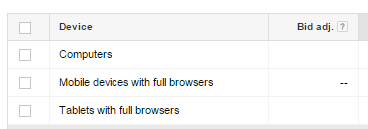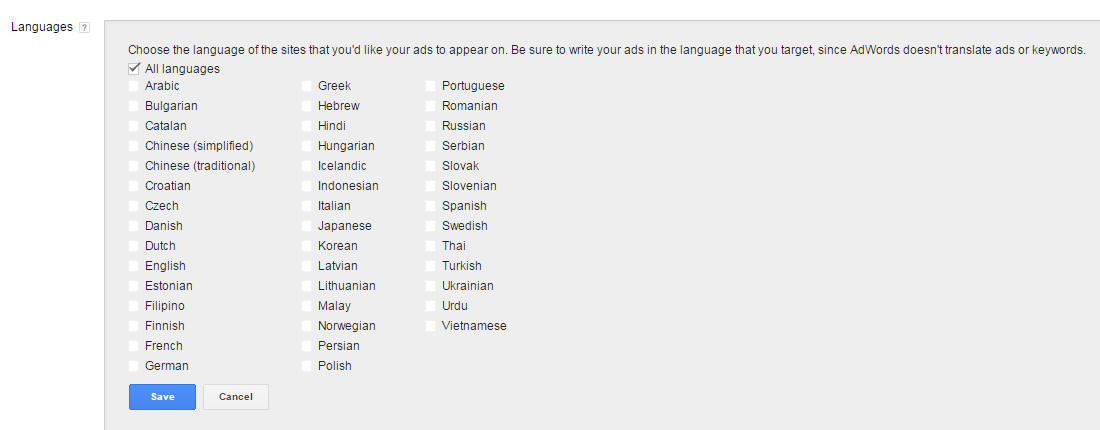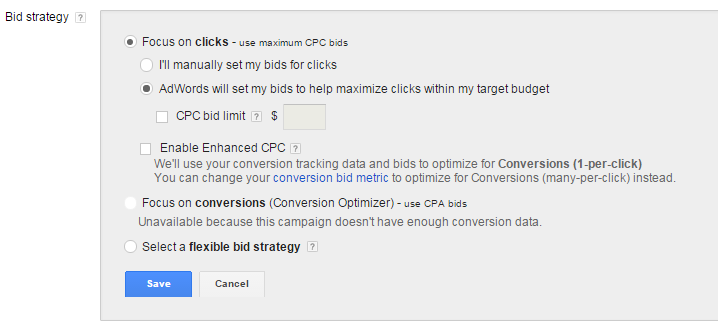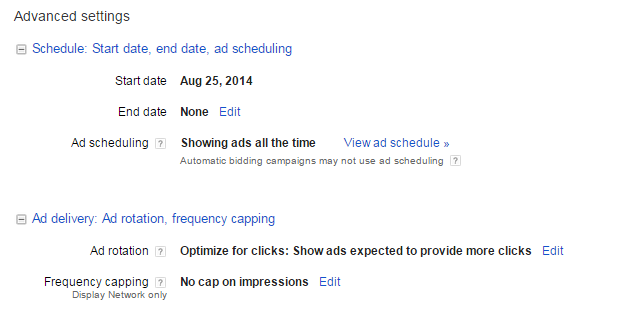Google AdWords campaign setup is crucial to effectively driving highly qualified, paid traffic to your website. Depending on the objective you’re seeking, a well-managed AdWords campaign can add significant value for your marketing dollar. A poorly managed campaign can become a money-pit. The purpose of this multi-part series is to provide some helpful tips and tricks we’ve learned over the more than three decades of combined campaign management experience. Lesson 1 involves properly setting up your campaigns for best performance.
Properly setting up your newly minted AdWords account can be a confusing process, but it doesn’t have to be. Paying attention to the details now may end up saving you money in the long run. An improperly setup account can be targeting the wrong geographic areas, mingling search and display traffic or losing performance by targeting networks outside of Google. Either way, you want to make sure you’re starting off on the right foot. Let’s get started…
Which Campaign Do I Choose?
You have a choice between five campaign types: search and display, search only, display only, shopping and video. Which one you choose depends on your objectives and the type of business you run. In order to understand the performance difference between search and display, you need to create separate campaigns. This also allows you to assign different budgets for each. If you’re an ecommerce outfit, you’ll want to setup a separate campaign for Google Shopping that works with your Google Merchant account. To run videos, you’ll need to use a video campaign since Google has made changes that doesn’t allow it to play nice with a display campaign. Lastly, I would also recommend creating a separate campaign for any re-targeting efforts you’ll undertake. These campaigns perform differently from general display campaigns geared to drive awareness at the top of the sales funnel.Image may be NSFW.
Clik here to view.
Networks
Google allows you to decide if you want to serve ads on the search network (including or excluding partners) and/or the display network. Naturally, if you opted to create a display only campaign, that will be pre-selected for you. The interesting choice here is the network partners. In my experience, if your budget is tight and you need to squeeze as much as you can from your campaigns, you want to opt out of network partners. The results can be spotty at best and you need to streamline to get the most out of your budget. In contrast, if you’re hitting your budget caps and need greater exposure, adding in network partners will serve that purpose. It truly depends on what you’re selling as to how much potential network partners will offer. It’s recommended to test and monitor results for a period of time after opting in to network partners to see how performance was impacted. Don’t overlook this important AdWords campaign setup step.
Image may be NSFW.
Clik here to view. Devices
Devices
Performance will certainly vary across devices. If you’re site isn’t responsive or mobile-friendly, you’ll be providing a poor experience for potential customers and can expect bad results. In that case, Google allows you to adjust bids to weed out mobile traffic. On the contrary, if your site is responsive, and your mobile experience is positive, you may see better results with mobile traffic and want to up the bids to increase exposure and thus conversions. Initially, the recommendation is to enable all devices, without bid adjustment, as long as your site is responsive/mobile-friendly. Depending on your focus, this could be a crucial component of your AdWords campaign setup.
Image may be NSFW.
Clik here to view. Location
Location
This seems straightforward, but you’d be surprised how this can be incorrectly setup. It’s simple if you target specific countries. It gets more complicated if you only target specific areas. In that case, you can radius targeting. The biggest AdWords campaign setup mistakes I see here are when users target places they don’t service and users not taking advantage of the advanced targeting options. The default is “People in, searching for, or who show interest in my targeted location” but that has problems. Think about it. Say you target the United States but someone from Australia “shows interest in” your ad, but you can’t ship to or work with them. That’s wasted clicks. You want to target “People in my targeted location” to make sure you’re reaching the right audience and wisely spending your money.
Image may be NSFW.
Clik here to view.
Languages
This is another AdWords campaign setup setting that would seem straightforward. It’s our international clients that the issue comes into play. When selecting the right language(s) you need to also think about your ads and your audience. In other words, you shouldn’t serve English ads when targeting Spain. You should have the ads translated. We see it often when clients target Canada with English ads but select French as a language. Sure, there are bilingual Canadians and you’ll reach those that have their browsers set to French, but also speak English. However, that doesn’t make it ideal. It’s best to match language with that of your ad and your audience. It makes sense to create separate campaigns for different languages as well.
Image may be NSFW.
Clik here to view.
Bid Strategy
This is one of the more complicated areas in your AdWords campaign setup. It’s best to start out with the default automatic bidding until you gather some data. If your objective is awareness, that will suffice. However, if your goal is to drive conversions (of any kind), you’ll want to test out the Enhanced CPC and Conversion Optimizer options down the line. They require a minimum number of conversions to work. Googles rule is at least 15 over the past 3o days. There are significant differences in the way that Enhanced CPC and Conversion optimizer work, but that’s a focus for future post. In terms of AdWords campaign setup, it’s recommended to leave the default.
Image may be NSFW.
Clik here to view.
Budget
This is pretty self-explanatory. You set your daily spend budget here.
Delivery Method
This allows you to choose two options: Standard or Accelerated. What you choose depends on your budget. If your budget is finite, select standard. If you have a large budget, one that might exceed search demand, then select accelerated. We typically use accelerated when we have a campaign fully optimized and can afford to spend as much as possible while maintaining a solid ROI.
Image may be NSFW.
Clik here to view.
Advanced Settings
The major AdWords campaign setup issues to pay attention to include the scheduling, ad rotation and frequency capping. If your campaign has a specific end date, by all means, add it here to avoid going over and wasting money. If not, ignore this setting. Ad Scheduling is also known as day-parting. This gives you the ability to show ads at different times of the day, days of the week, etc. Making changes here allows you to exclude days, bid down for slow times or bid up for times with high conversion rates. Initially, you won’t have any data to make changes. The only change you might make here is to exclude weekends if you’re a B2B company and positive no prospective customers will be searching on the weekend.
Ad rotation gives you the ability to decide how you want ads to show. Typically, you’ll start with the default: optimize for clicks. This will automatically move poor performing ads to the bottom. However, let’s say you want to A/B or A/B/C test ads. You can either choose rotate evenly or rotate indefinitely to evenly display ads for 90 days or indefinitely. We are huge fans of split testing ads and will typically start of rotating evenly. Optimize for conversions is a setting you might change to in the future, once you have conversion data. Initially, it’s useless. What you choose depends on the strategy you’ll use to manage your ads.
Frequency capping is only relevant to display campaigns. You can set a max number of times ads are seen by the same person on a given day, week or month. This serves two purposes: 1) Makes sure you don’t overwhelm and annoy a prospective customer and 2) frees up budget to show ads to new people in that same time range. This is a an often overlooked detail during setup and can lead to angry or annoyed customers in the future depending on how your display and retargeting ads are setup.
Image may be NSFW.
Clik here to view.
Analytics, Tracking, etc.
You want to make sure you’re utilizing all the tools created by Google to help you optimize your AdWords campaign setup.
- Google Analytics. You want to setup a Google Analytics (GA) account to track all activity with your website and especially with your AdWords campaigns. This requires signing up for an account using the same email as the one used for AdWords. Then, you’ll install the javascript tracking code onto every page of your site. You may need your developer or IT team to get this done. You can either use this method or for the more advanced, you can implement Google Tag Manager (GTM.
- Auto-tagging. This tells google to add tracking code to all of your ads, automatically, so you don’t have to learn how to write Google Analytics tracking parameters. This is sufficient for most unless you have some very custom needs.
- Linking Accounts. Once you’ve created your GA account, you’ll want to link it to your AdWords account to start collecting data.
- AdWords Conversion Code. This is a javascript code snippet placed on your confirmation page. It may be the page used for lead generation or ecommerce sales. Either way, you’ll need that code placed on the final page a visitor sees after taking an action oh your site. This can be done by updated the source code of the website, or, if using GTM, by creating a new tag in the GTM console.
Final Thoughts…
Proper AdWords campaign setup is not an easy process. Given the many settings one can chose, it’s important to have a good understanding of how each variable can potentially impact your campaign. Our purpose here was to review the major settings that will get you off to a good start. Remember, this is just the beginning. Once your campaign launches and you have data to analyze, the real fun begins – optimization. We wrote about that too –Top 5 Ways to Improve Your AdWords Performance.
Our team has been managing AdWords, Bing, Facebook, LinkedIn, etc. campaigns for many years now. If you have questions about anything covered in this post or would like some one on one attention, we’ll be more than happy to respond in the comments below or to setup a time to assist.
Good luck!
————————
Hey, if you made it this far, we assume you liked what you read! Do us a favor, please? Share this post with a colleague, friend or on social media using the icons at the top. For bonus points, If you have a unique experience or perspective, please add a comment below. Most importantly, thank you for reading. Hope to see you again real soon!
The post AdWords 101: 10 AdWords Campaign Setup Best Practices appeared first on Durham Digital Marketing Agency.